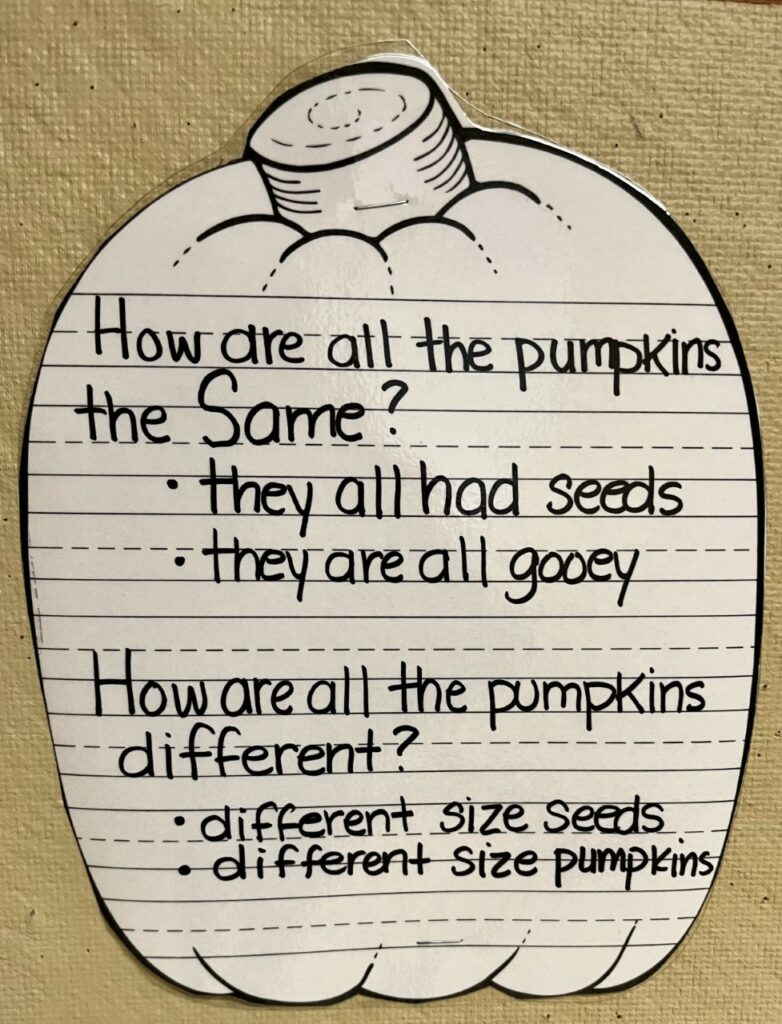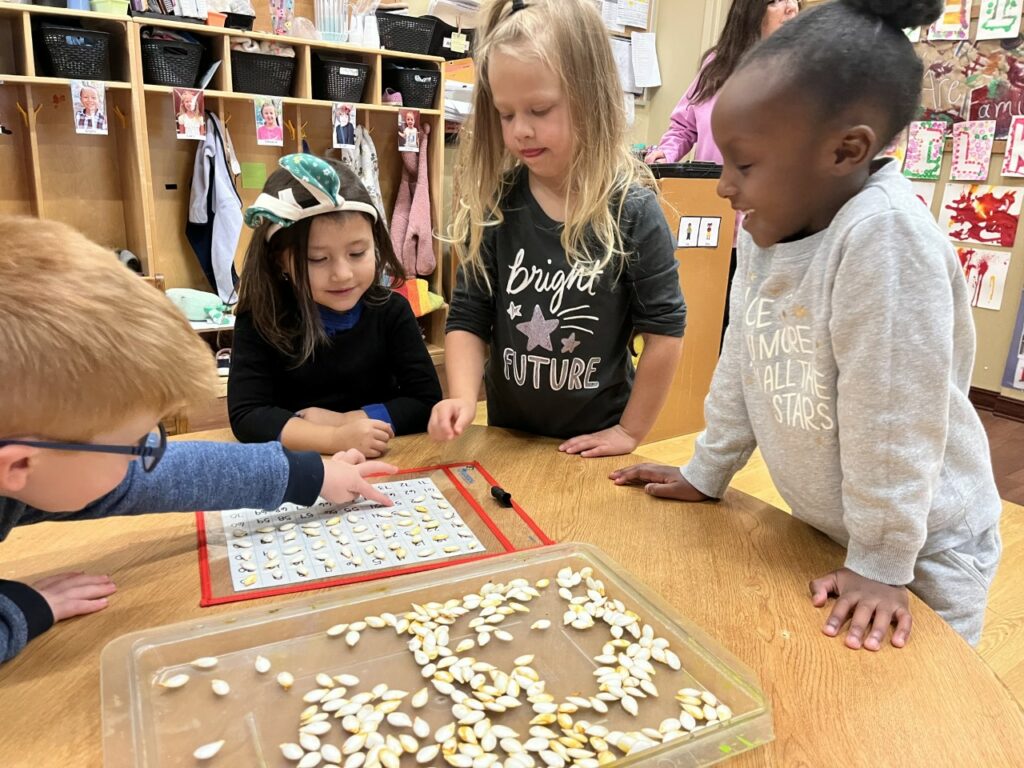
Teachers brought three pumpkins into the classroom that were different sizes and colors. Each day a different pumpkin’s characteristics were explored. Vocabulary words such as height, weight, and circumference were introduced through meaningful activities. Plastic chain links and measuring tapes were used to measure the circumference. Rulers and stacking unifix cubes were helpful in determining the height. A scale was used to find out the weight and sometimes, holding one pumpkin and then another led to comparisons of which one weighed more or less.
Teachers encouraged children to explore the outside of the pumpkins by asking, “What does it look like?” and “What does it feel like?” The children were also encouraged to make predictions about what they might find inside. Pictures were drawn of each pumpkin and labeled with the word “pumpkin” by the children to display alongside the chart with all the observations and findings. As part of a two-day art project, all three pumpkins were put on the table. Each child was given a black sharpie marker so they could draw the pumpkins on his/her paper. The next day the children were given green, yellow, and orange paint to give color to the pumpkins that they had drawn the day before.
Children were trusted with the use of safety knives and allowed to cut into the pumpkins so that they could see if their predictions about the inside of each pumpkin was correct. They discovered that it was no easy task to cut into a pumpkin as it took a long time and a lot of hand strength. Once inside each pumpkin teachers prompted children with questions like “What does it smell like?”, “What does it feel like?”, and “What does it look like?” Children dictated their words and teachers wrote them down to record their findings.
The children were intrigued by the number of seeds that they found inside each pumpkin. Once the seeds had dried out, teachers provided number grids so that the children could lay one seed on each box in order to count the total number of seeds in each pumpkin. This was a very meaningful way to show one-to-one correspondence in counting.
To summarize this project, teachers asked the children questions like “In what ways are the pumpkins the same?” and “In what ways are they different?” while writing down their responses. To further extend their thinking based on their answers, teachers asked the question, “How are the pumpkins like us?”. This was a way to incorporate the topic of diversity into the project with the overall finding being that just because something looks different on the outside doesn’t mean that it isn’t the same on the inside.



















